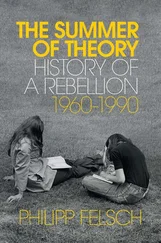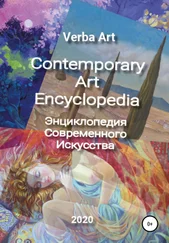I was here convinced of the truth of a reflection I had often made, that if it was the fashion to go naked, the face would be hardly observed. I perceived that the ladies with the finest skins and most delicate shapes had the greatest share of my admiration, though their faces were sometimes less beautiful than those of their companions. To tell you the truth, I had wickedness enough to wish secretly that Mr Jervas could have been there invisible. 1I fancy it would have very much improved his art, to see so many fine women naked, in different postures, some in conversation, some working, others drinking coffee or sherbet, and many negligently lying on their cushions, while their slaves (generally pretty girls of seventeen or eighteen) were employed in braiding their hair in several pretty fancies. In short, it is the women’s coffee‐house, where all the news of the town is told, scandal invented, &c. – They generally take this diversion once a‐week, and stay there at least four or five hours, without getting cold by immediate coming out of the hot bath into the cold room, which was very surprizing to me. The lady that seemed the most considerable among them, entreated me to sit by her, and would fain have undressed me for the bath. I excused myself with some difficulty. They being all so earnest in persuading me, I was at last forced to open my shirt, and shew them my stays; which satisfied them very well for, I saw, they believed I was so locked up in that machine, that it was not in my own power to open it, which contrivance they attributed to my husband. […]
I am sure I have now entertained you with an account of such a sight as you never saw in your life, and what no book of travels could inform you of. ’Tis no less than death for a man to be found in one of these places. […]
To the Countess of Mar
Constantinople, March 10, 1718
I went to see the Sultana Hafitén, favourite of the late Emperor Mustapha….
I was led into a large room, with a sofa the whole length of it, adorned with white marble pillars like a ruelle , covered with pale blue figured velvet on a silver ground, with cushions of the same, where I was desired to repose till the Sultana appeared. […] [H]er dress was something so surprisingly rich, I cannot forbear describing it to you. She wore a vest called donalma , and which differs from a caftán by longer sleeves, and folding over at the bottom. It was of purple cloth, strait to her shape, and thick set, on each side ;down to her feet, and round the sleeves, with pearls of the best water, of the same size as their buttons commonly are. You must not suppose I mean as large as those of my Lord ——, but about the bigness of a pea; and to these buttons large loops of diamonds, in the form of those gold loops so common upon birthday coats. This habit was tied, at the waist, with two large tassels of smaller pearl, and round the arms embroidered with large diamonds: her shift fastened at the bottom with a great diamond, shaped like a lozenge; her girdle as broad as the broadest English ribbon, entirely covered with diamonds. Round her neck she wore three chains, which reached to her knees: one of large pearl, at the bottom of which hung a fine coloured emerald, as big as a turkey‐egg; another, consisting of two hundred emeralds, close joined together, of the most lively green, perfectly matched, every one as large as a half‐crown piece, and as thick as three crown pieces; and another of small emeralds, perfectly round. But her earrings eclipsed all the rest. They were two diamonds, shaped exactly like pears, as large as a big hazel‐nut. Round her talpoche she had four strings of pearl, the whitest and most perfect in the world, at least enough to make four necklaces, every one as large as the Duchess of Marlborough’s, and of the same size, fastened with two roses, consisting of a large ruby for the middle stone, and round them twenty drops of clean diamonds to each. Beside this, her head‐dress was covered with bodkins of emeralds and diamonds. She wore large diamond bracelets, and had five rings on her fingers, all single diamonds, (except Mr Pitt’s) the largest I ever saw in my life. It is for jewellers to compute the value of these things; but, according to the common estimation of jewels in our part of the world, her whole dress must be worth above a hundred thousand pounds sterling. This I am very sure of, that no European queen has half the quantity; and the empress’s jewels, though very fine, would look very mean near hers. […]
To the Countess of—
May 1718
I am now preparing to leave Constantinople, and perhaps you will accuse me of hypocrisy when I tell you ’tis with regret; but I am used to the air, and have learnt the language. I am easy here … I ramble every day, wrapped up in my ferigée and asmáck , about Constantinople, and amuse myself with seeing all that is curious in it. […]
I was three days ago at one of the finest [bagnios] in the town, and had the opportunity of seeing a Turkish bride received there, and all the ceremonies used on that occasion, which made me recollect the epithalamium of Helen, by Theocritus; and it seems to me, that the same customs have continued ever since. All the she‐friends, relations, and acquaintance of the two families, newly allied, meet at the bagnio; several others go out of curiosity, and I believe there were that day at least two hundred women. Those that were or had been married placed themselves round the room on the marble sofas; but the virgins very hastily threw off their clothes, and appeared without other ornament or covering than their own long hair braided with pearl or ribbon. Two of them met the bride at the door, conducted by her mother and another grave relation. She was a beautiful maid of about seventeen, very richly dressed, and shining with jewels, but was presently reduced by them to the state of nature. Two others filled silver gilt pots with perfume, and began the procession, the rest following in pairs to the number of thirty. The leaders sung an epithalamium, answered by the others in chorus, and the two last led the fair bride, her eyes fixed on the ground, with a charming affectation of modesty. In this order they marched round the three large rooms of the bagnio. ’Tis not easy to represent to you the beauty of this sight, most of them being well proportioned and white skinned; all of them perfectly smooth and polished by the frequent use of bathing. After having made their tour, the bride was again led to every matron round the rooms, who saluted her with a compliment and a present, some of jewels, others pieces of stuff, handkerchiefs, or little gallantries of that nature, which she thanked them for by kissing their hands.
I was very well pleased with having seen this ceremony: and, you may believe me, that the Turkish ladies have at least as much wit and civility, nay, liberty, as ladies among us. […]
To the Abbé Conti
Constantinople, May 19, 1718
Human grandeur being here yet more unstable than anywhere else, ’tis common for the heirs of a great three‐tailed pasha not to be rich enough to keep in repair the house he built; thus, in a few years, they all fall to ruin. I was yesterday to see that of the late Grand Vizier, who was killed at Peterwaradin. 2It was built to receive his royal bride, daughter of the present Sultan, but he did not live to see her there. […] The extent of it is prodigious; the guardian assured me there are eight hundred rooms in it; I will not answer for that number, since I did not count them; but ’tis certain the number is very large, and the whole adorned with a profusion of marble, gilding, and the most exquisite painting of fruit and flowers. The windows are all sashed with the finest crystalline glass brought from England; and all the expensive magnificence that you can suppose in a palace founded by a vain young luxurious man, with the wealth of a vast empire at his command. But no part of it pleased me better than the apartments destined for the bagnios. There are two built exactly in the same manner, answering to one another; the baths, fountains, and pavements, all of white marble, the roofs gilt, and the walls covered with Japan china; but adjoining to them, two rooms, the upper part of which is divided into a sofa; in the four corners falls of water from the very roof, from shell to shell, of white marble, to the lower end of the room, where it falls into a large basin, surrounded with pipes, that throw up the water as high as the room. The walls are in the nature of lattices; and, on the outside of them, vines and woodbines planted, that form a sort of green tapestry, and give an agreeable obscurity to these delightful chambers. […]
Читать дальше












